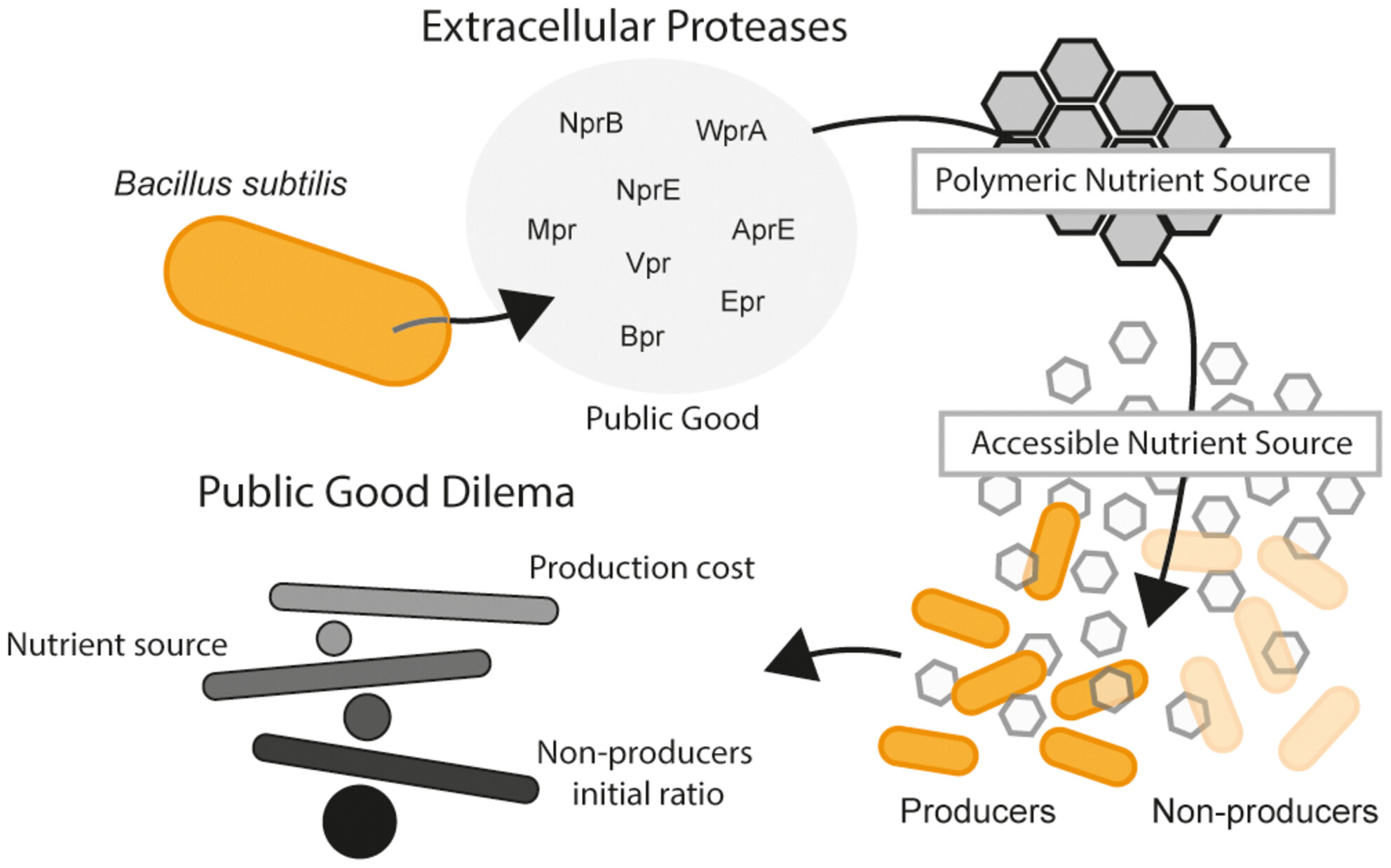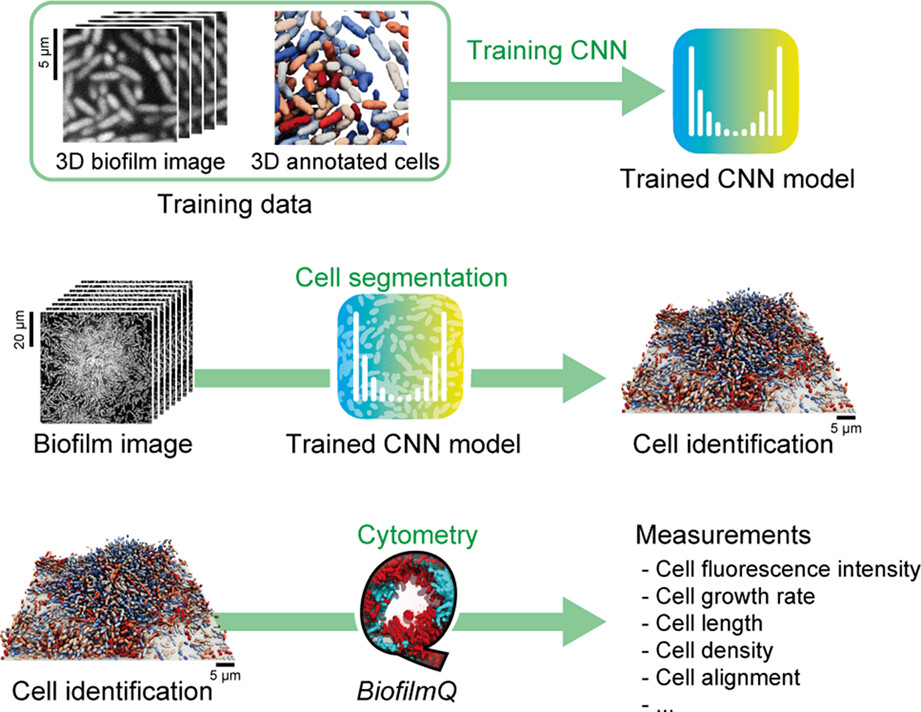Journal list menu
Export Citations
Download PDFs
2023
A new type of phasin characterized by the presence of a helix-hairpin-helix domain is required for normal polyhydroxybutyrate accumulation and granule organization in Caulobacter crescentus
- First Published: 24 July 2023
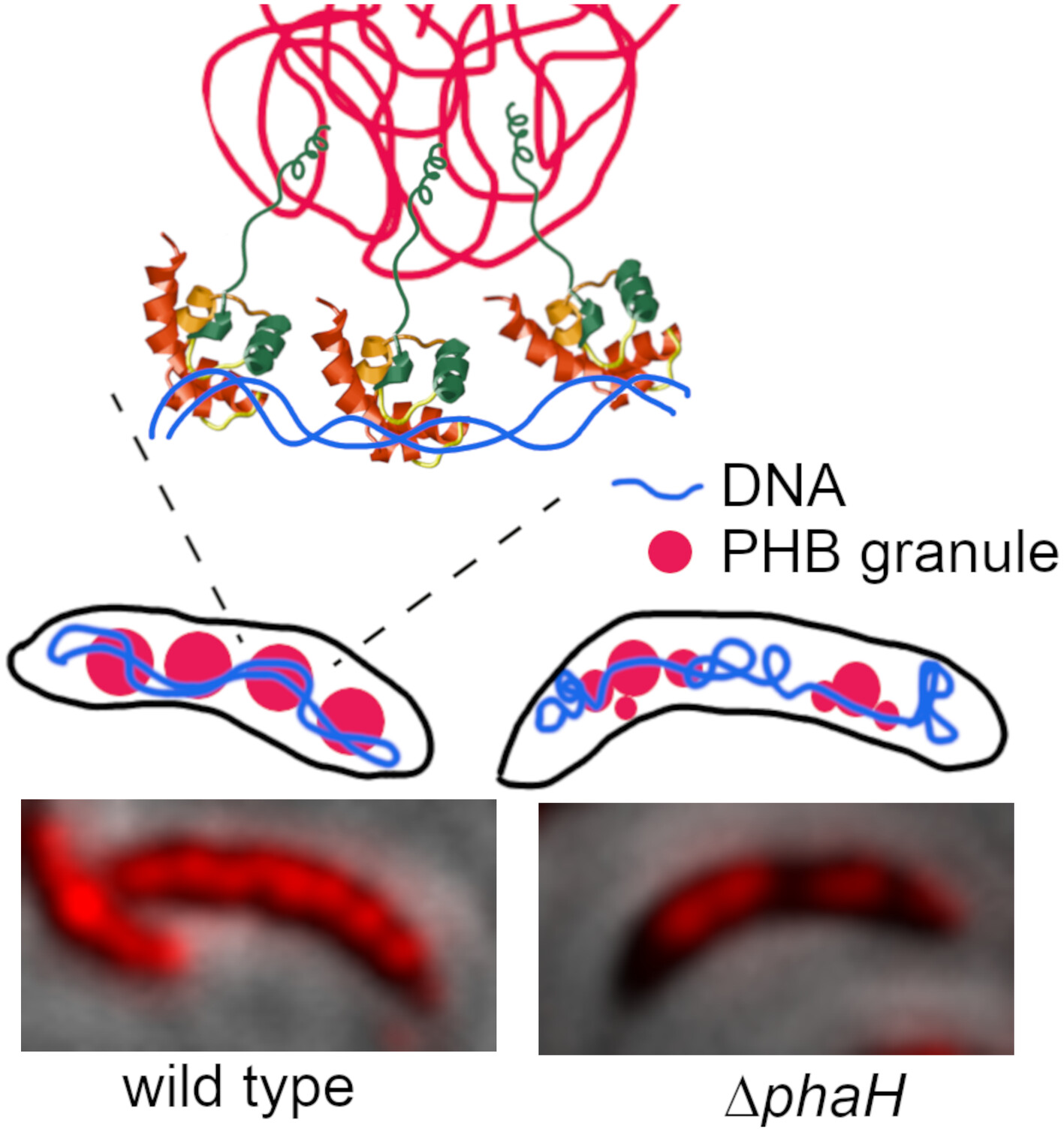
Granules of the reserve polymer PHB can occupy most of the cytoplasm under some growth conditions. We describe PhaH, a granule-associated protein that in Caulobacter crescentus allows the interaction of the granules with the nucleoid, allowing a better distribution of the granules in the cell. Unlike other similar proteins, PhaH does seems to only have a role in PHB granule distribution but not in segregation.
Bacillus subtilis extracellular protease production incurs a context-dependent cost
- First Published: 28 June 2023
New insights into the disulfide stress response by the Bacillus subtilis Spx system at a single-cell level
- First Published: 17 June 2023
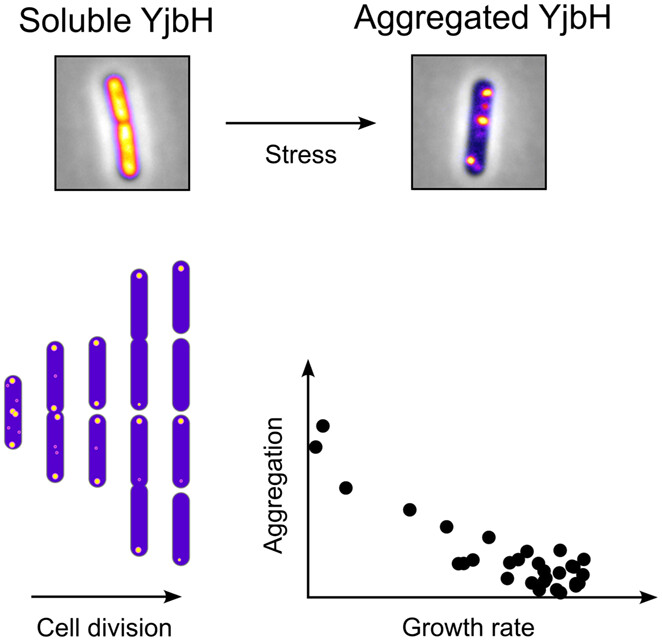
Upon stress, the adaptor protein YjbH forms aggregates. YjbH aggregation promotes increased levels of Spx, a key transcriptional regulator that orchestrates gene expression to mitigate stress. We investigated the localization and in vivo dynamics of YjbH aggregates, the impact of aggregates on cellular fitness, and the contributions of the two domains of YjbH to aggregation. Furthermore, we demonstrate that the aggregation properties of YjbH are conserved among members of the Bacillota (Firmicutes) phylum.
Single-cell segmentation in bacterial biofilms with an optimized deep learning method enables tracking of cell lineages and measurements of growth rates
- First Published: 17 April 2023
The Mba1 homologue of Trypanosoma brucei is involved in the biogenesis of oxidative phosphorylation complexes
- First Published: 24 February 2023
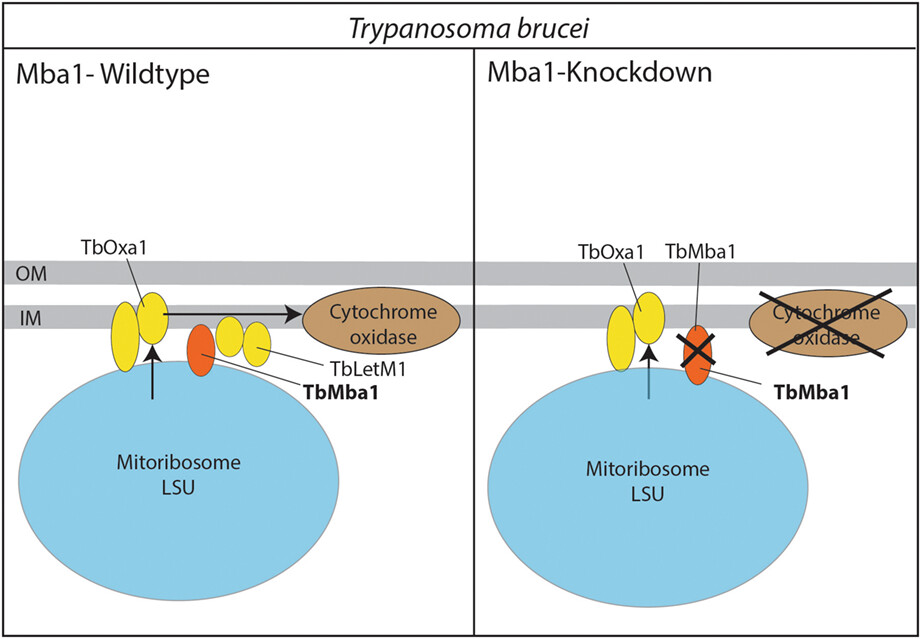
The trypanosomal orthologue of the mitoribosome receptor Mba1 (TbMba1) is essential for normal growth of procyclic trypanosomes. Proteomic analyses of TbMba1-depleted mitochondria revealed reduced levels of many components of the cytochrome c oxidase (Cox) complex, three subunits of which are mitochondrially encoded. Pull-down experiments showed that TbMba1 forms a dynamic interaction network that includes the trypanosomal Mdm38/Letm1 orthologue and a trypanosome-specific factor that stabilizes the CoxI and CoxII mRNAs.
Using a whole genome co-expression network to inform the functional characterisation of predicted genomic elements from Mycobacterium tuberculosis transcriptomic data
- First Published: 16 March 2023
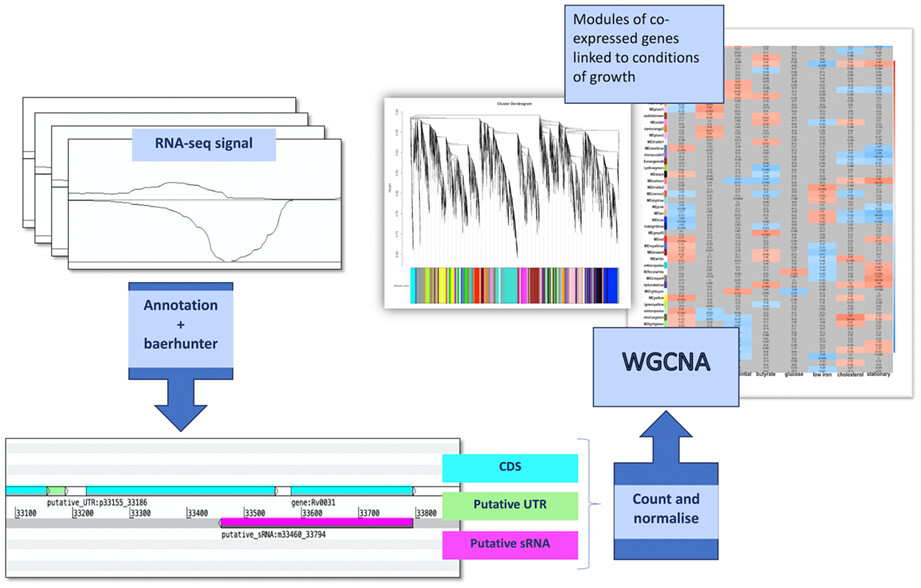
We present a whole genome co-expression network for Mycobacterium tuberculosis that includes predicted non-coding RNA (ncRNA) features from RNA-seq samples from 15 different experimental conditions. Module associations can be evaluated for likely ‘co-conspirators’: hypothetical coding genes or non-coding elements that co-localise in modules with known functional groupings or gene pathways. This data can be used to identify conditionally expressed ncRNA candidates for experimental validation and suggest functional associations for conserved hypothetical proteins.
Specific preadaptations of Rhodococcus equi cooperate with its Virulence-associated protein A during macrophage infection
- First Published: 10 January 2023
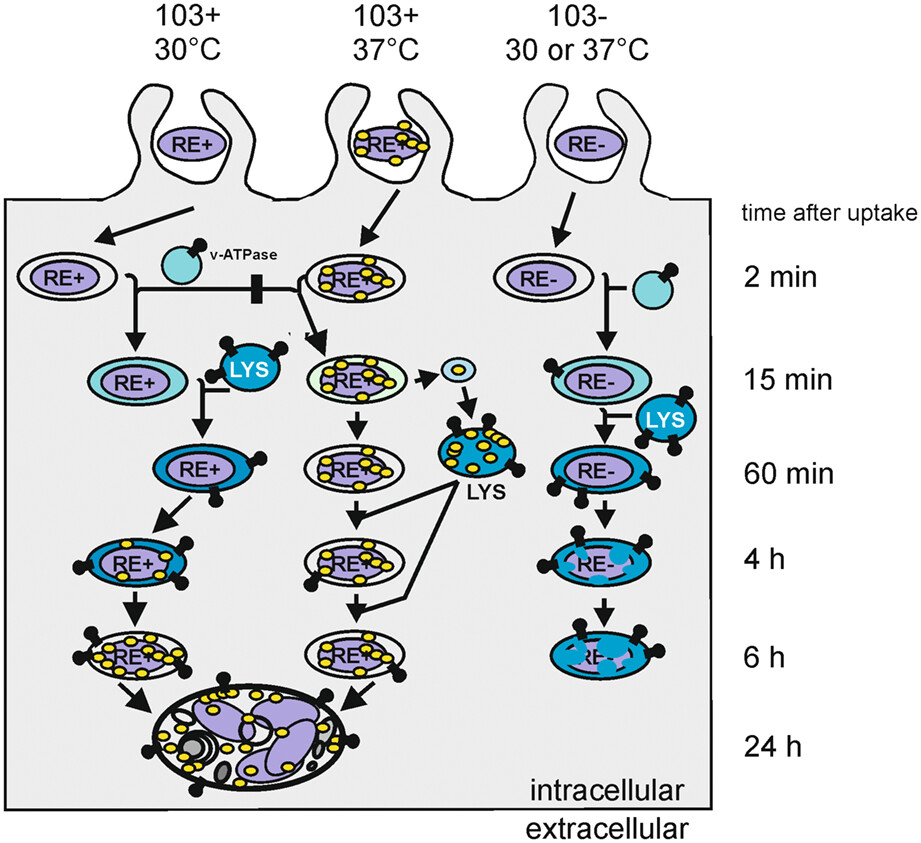
Rhodococcus equi bacteria entering macrophages can face different fates: Avirulent R. equi are delivered to a phagolysosome (bottom right) and killed. When virulent R. equi are cultivated at 30°C, they do not express the major virulence factor VapA (yellow), and they spend hours in an acidified phagolysosome (blue) before they have produced enough VapA to pH-neutralize the phagosome and grow. 37°C-grown virulent R. equi produce VapA to start with and find themselves immediately in a privileged compartment (bottom left).
Spatial and temporal localization of cell wall associated pili in Enterococcus faecalis
- First Published: 24 November 2022
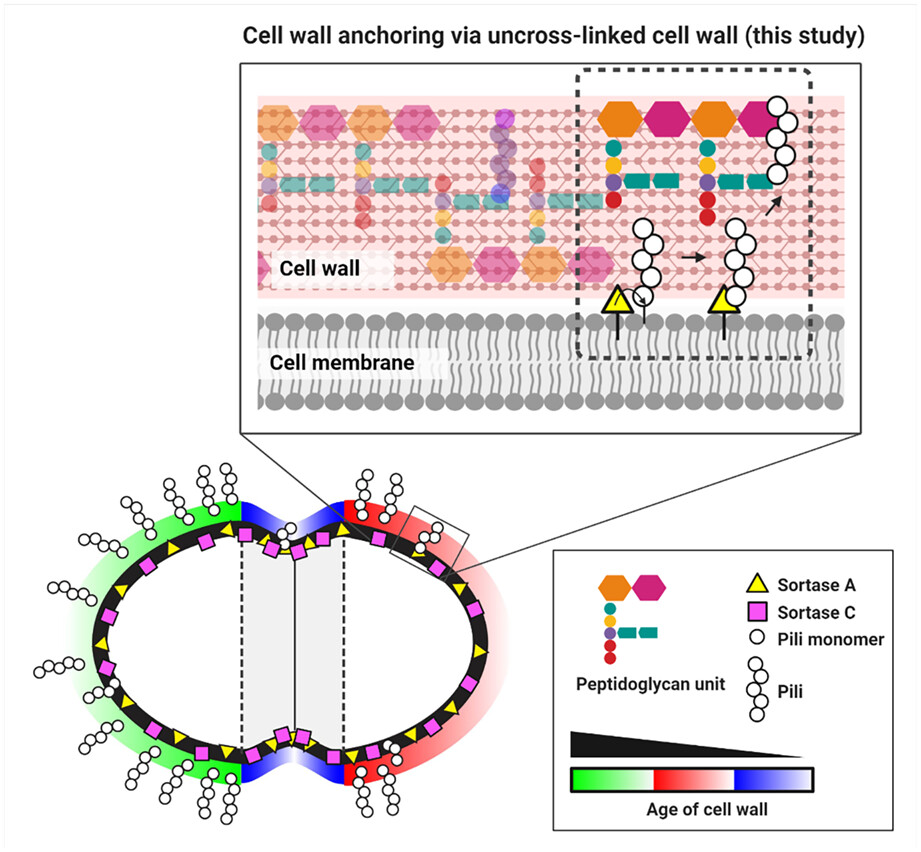
Enterococcus faecalis endocarditis and biofilm associated pili (Ebp) are surface exposed virulence factors that are attached onto the cell wall by sortase enzymes. Here, we show that pili are surface exposed sequentially towards the cell pole at the cell hemispheres in a cell wall age-dependent manner. In addition, we propose an alternative cell wall anchoring pathway where pili are directly anchored onto mature uncrosslinked cell wall, independent of new cell wall synthesis at the septum.
2022
Importance of aspartyl protease 5 in the establishment of the intracellular niche during acute and chronic infection of Toxoplasma gondii
- First Published: 09 October 2022
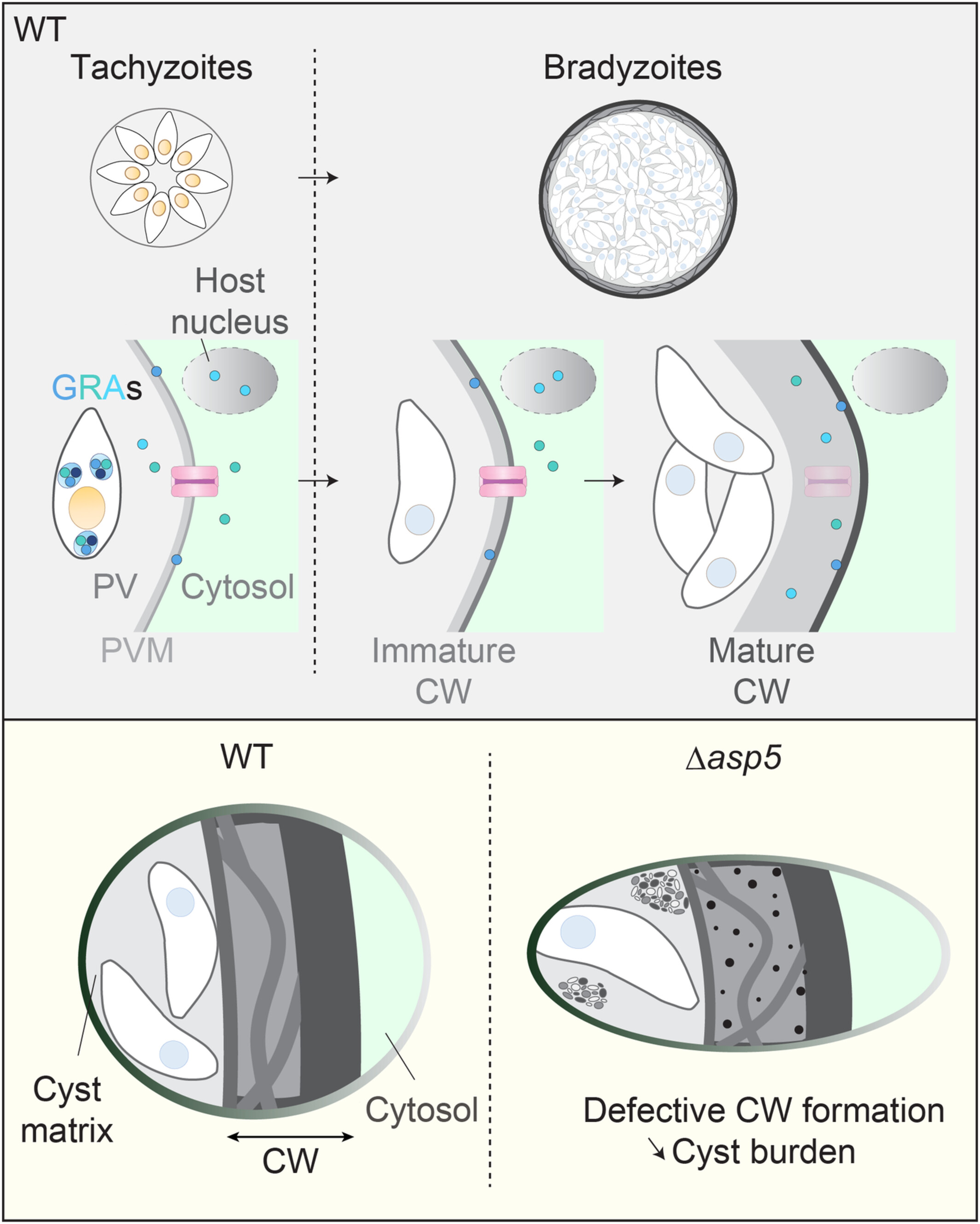
Essential to establish a Toxoplasma gondii infection, a subset of GRAs proteins residing in the parasitophorous vacuole or exported into the host cell, undergo proteolytic cleavage in the Golgi via the aspartyl protease 5 (ASP5). Here, we extended the study of ASP5 roles in the bradyzoite stage and showed that ASP5 substrates are not translocated across the mature cyst wall and that these substrates might play a structural role in the maintenance of the cyst wall.
OmpR and Prc contribute to switch the Salmonella morphogenetic program in response to phagosome cues
- First Published: 17 September 2022
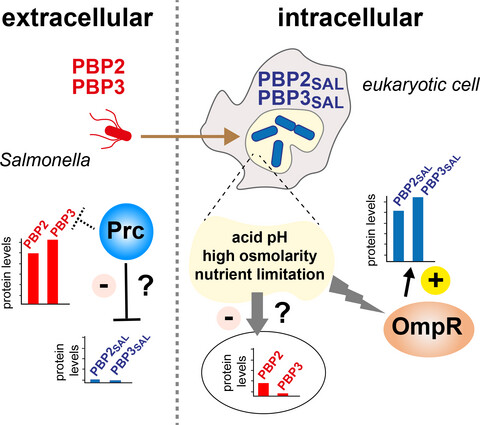
Salmonella switches morphogenetic peptidoglycan synthases inside eukaryotic cells, a phenomenon triggered by three cues: acid pH, high osmolarity and nutrient scarcity. OmpR responds to acid pH upregulating alternative synthases PBP2SAL and PBP3SAL. Prc fine-tunes PBP3 levels and prevents escape of PBP2SAL/PBP3SAL production in extracellular bacteria, in which PBP2/PBP3 direct rod shape. Escherichia coli, which lacks PBP2SAL/PBP3SAL, displays gross morphological alterations if exposed to phagosome cues due to decrease in levels of its morphogenetic peptidoglycan synthases.
Mechanisms of chlorate toxicity and resistance in Pseudomonas aeruginosa
- First Published: 08 August 2022
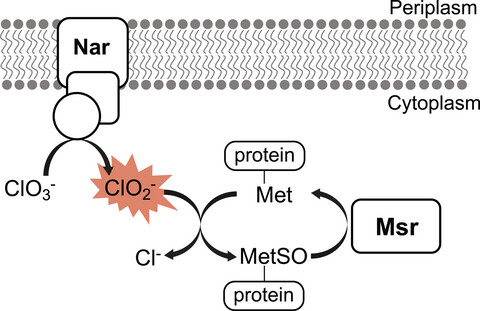
Chlorate is a pro-drug that kills pathogens in low-oxygen environments where conventional antibiotics are less effective. This study reveals that chlorate reduction to chlorite (catalyzed by Nar) kills cells by causing proteome-wide methionine oxidation (MetSO), which can be partially repaired by methionine sulfoxide reductase (Msr) enzymes. Mutations that decrease Nar activity are a primary mechanism of chlorate resistance.
Preferential catabolism of l- vs d-serine by Proteus mirabilis contributes to pathogenesis and catheter-associated urinary tract infection
- First Published: 03 August 2022
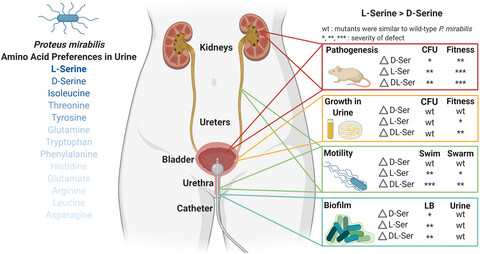
Amino acids are a predominant nutrient in urine, and their import and catabolism has been hypothesized to contribute to the ability of bacteria to cause urinary tract infection. We demonstrate that a common uropathogen, Proteus mirabilis, preferentially catabolizes l-serine followed by d-serine, threonine, tyrosine, and glutamine during growth in human urine. We further demonstrate that l-serine catabolism provides a greater fitness advantage than d-serine catabolism, yet both pathways contribute to pathogenesis in the urinary tract.
Perturbation of ATG16L1 function impairs the biogenesis of Salmonella and Coxiella replication vacuoles
- First Published: 07 December 2021

ATG16L1, a central component of the autophagy complex that lipidates LC3, contributes to the development and maintenance of the replicative niches of different intracellular bacterial pathogens. This study highlights that Salmonella Typhimurium uses the effector protein SopF to block the role of ATG16L1 during xenophagy to maintain the Salmonella-containing vacuole. In addition, SopF was used as a tool to demonstrate that ATG16L1 contributes to the biogenesis of the Coxiella replicative niche via its role in autophagy, but not xenophagy.




